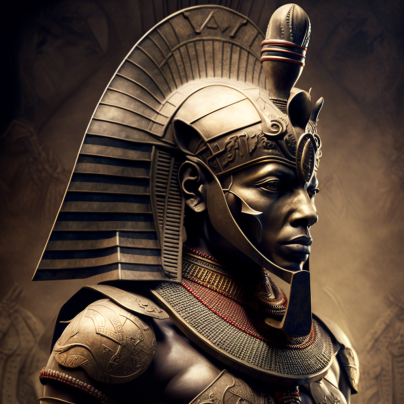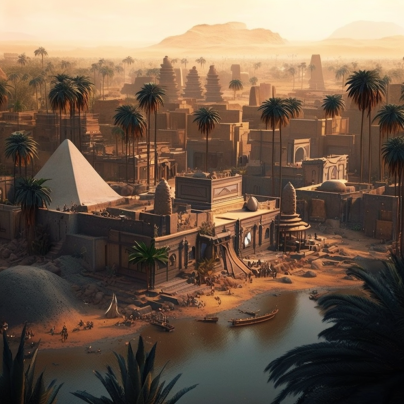Pharaoh Ramses II
one of the most powerful pharaohs of the New Kingdom


Ramses II, also known as Ramses the Great, was one of the most powerful pharaohs of the New Kingdom in ancient Kemet, also known as Egypt. He was born around 1303 BCE, the son of Seti I and Queen Tuya. Ramses II is known for his long and prosperous reign, which lasted from 1279 BCE to 1213 BCE, a total of 66 years.
Ramses II grew up in a royal household, and from a young age, he was trained to be a leader. He was appointed as the governor of a province when he was only 14 years old. After the death of his father, Seti I, Ramses II became the third pharaoh of the Nineteenth Dynasty of Kemet.
One of the most significant achievements of Ramses II's reign was his role in the Battle of Kadesh, which took place in 1274 BCE. This was a military campaign against the Hittites, who were a powerful empire in what is now modern-day Turkey. Ramses II led his army in this battle and although the outcome was not a clear victory, it allowed him to negotiate a peace treaty with the Hittites, which lasted for over a century.
During his reign, Ramses II also commissioned many impressive architectural and artistic works. One of the most notable is the construction of Abu Simbel, which is a temple complex located in Upper Kemet. The temple was dedicated to the gods Amun, Ra-Horakhty, and Ptah, and features four colossal statues of Ramses II, each over 20 meters in height. Ramses II also built a new capital city, called Pi-Ramses, which was located in the eastern Nile Delta.
Another significant achievement of Ramses II was his role in expanding the empire's influence and territory. He launched military campaigns in Syria and Palestine, where he successfully conquered new territories and expanded the empire's wealth and resources.
Ramses II's legacy is also evident in the art and artifacts from his reign. He commissioned many beautiful statues and reliefs that depict him and his accomplishments. These artifacts provide insight into the culture and society of ancient Kemet during Ramses II's reign.
In conclusion, Ramses II was one of the most powerful pharaohs of the New Kingdom in ancient Kemet. He grew up in a royal household and was trained to be a leader from a young age. During his long reign, he achieved many significant accomplishments, including leading a successful military campaign in the Battle of Kadesh, commissioning impressive architectural works such as Abu Simbel and Pi-Ramses, and expanding the empire's influence and territory. His legacy is evident in the art and artifacts from his reign and he continues to be a source of fascination and study for historians and Egyptologists today.

Like this content? Feel free to comment & share!